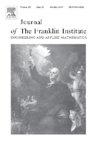基于干扰鲁棒投影梯度的RBF网络构造
IF 4.2
3区 计算机科学
Q2 AUTOMATION & CONTROL SYSTEMS
Journal of The Franklin Institute-engineering and Applied Mathematics
Pub Date : 2025-06-19
DOI:10.1016/j.jfranklin.2025.107798
引用次数: 0
摘要
在径向基函数(RBF)网络训练中,一个重要的问题是RBF中心的选择,以有效地利用所有可用资源。另外两个挑战包括处理异常训练样本和权重噪声。本文提出了一种鲁棒算法来解决这三个问题。该算法的基本概念包括将训练过程表述为约束优化问题。目标函数由两个部分组成:一个是最小化离群训练样本的影响,而另一个是解决权重噪声的影响。因此,我们可以有效地管理和调节离群噪声和权重噪声的影响。在公式中,我们结合了一个0范数约束,它提供了对训练网络中RBF节点数量的显式控制。为了解决优化问题,我们引入了干扰鲁棒投影梯度(IR-PG)算法。此外,我们提出了一个理论分析,探讨了IR-PG算法所表现出的收敛行为。然后,我们扩展了IR-PG算法的能力,以有效地处理同时存在的权重噪声和权重故障。通过大量的模拟,我们证明了我们的算法在准确性和鲁棒性方面优于几种前沿方法。本文章由计算机程序翻译,如有差异,请以英文原文为准。
Constructing RBF network based on interference robust projected gradient
In the radial basis function (RBF) network training, one significant issue is the selection of RBF centers to effectively utilize all available resources. Two additional challenges include handling outlier training samples and weight noise. This paper proposes a robust algorithm that addresses these three issues. The algorithm’s fundamental concept involves formulating the training process as a constrained optimization problem. The objective function consists of two components: one aims to minimize the influence of outlier training samples, while the other addresses the effects of weight noise. Consequently, we can effectively manage and regulate the impact of both outlier noise and weight noise. In the formulation, we incorporate an -norm constraint, which provides explicit control over the number of RBF nodes in the trained network. To solve the optimization problem, we introduce the interference robust projected gradient (IR-PG) algorithm. Furthermore, we present a theoretical analysis that explores the convergence behavior exhibited by the IR-PG algorithm. We then extend the capabilities of the IR-PG algorithm to effectively handle the simultaneous presence of weight noise and weight fault. Through extensive simulations, we demonstrate that our algorithm outperforms several cutting-edge methods in terms of both accuracy and robustness.
求助全文
通过发布文献求助,成功后即可免费获取论文全文。
去求助
来源期刊
CiteScore
7.30
自引率
14.60%
发文量
586
审稿时长
6.9 months
期刊介绍:
The Journal of The Franklin Institute has an established reputation for publishing high-quality papers in the field of engineering and applied mathematics. Its current focus is on control systems, complex networks and dynamic systems, signal processing and communications and their applications. All submitted papers are peer-reviewed. The Journal will publish original research papers and research review papers of substance. Papers and special focus issues are judged upon possible lasting value, which has been and continues to be the strength of the Journal of The Franklin Institute.

 求助内容:
求助内容: 应助结果提醒方式:
应助结果提醒方式:


